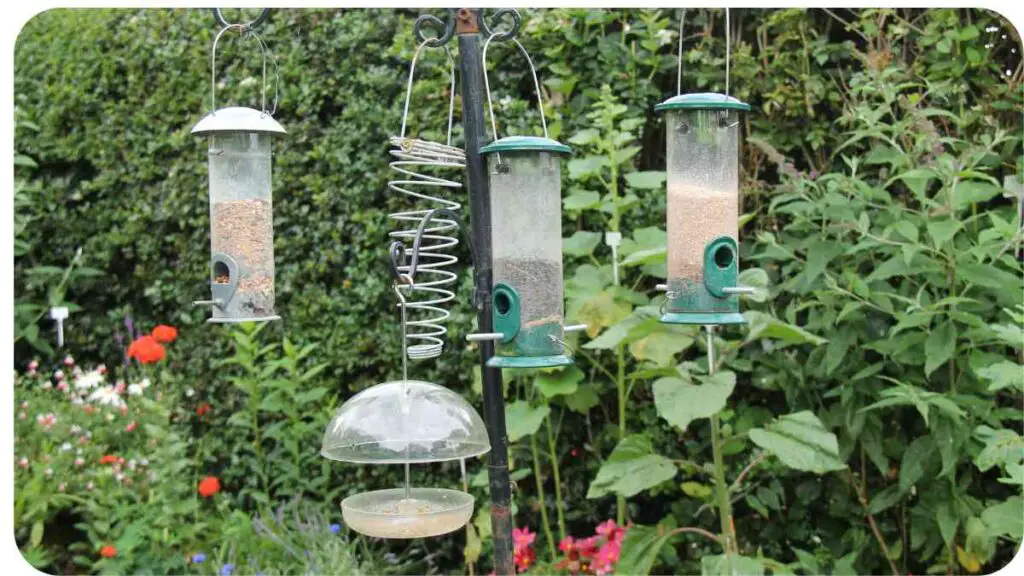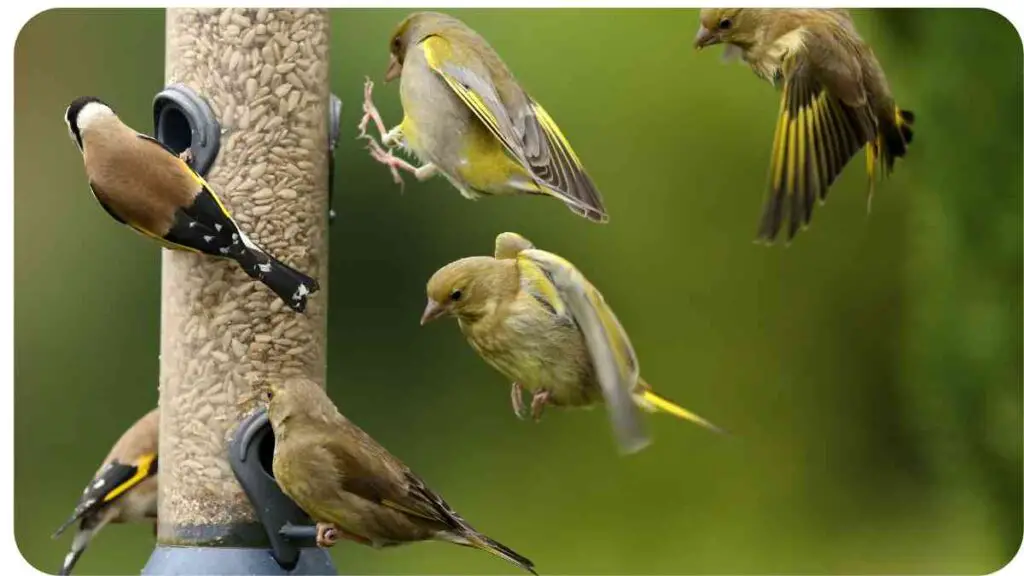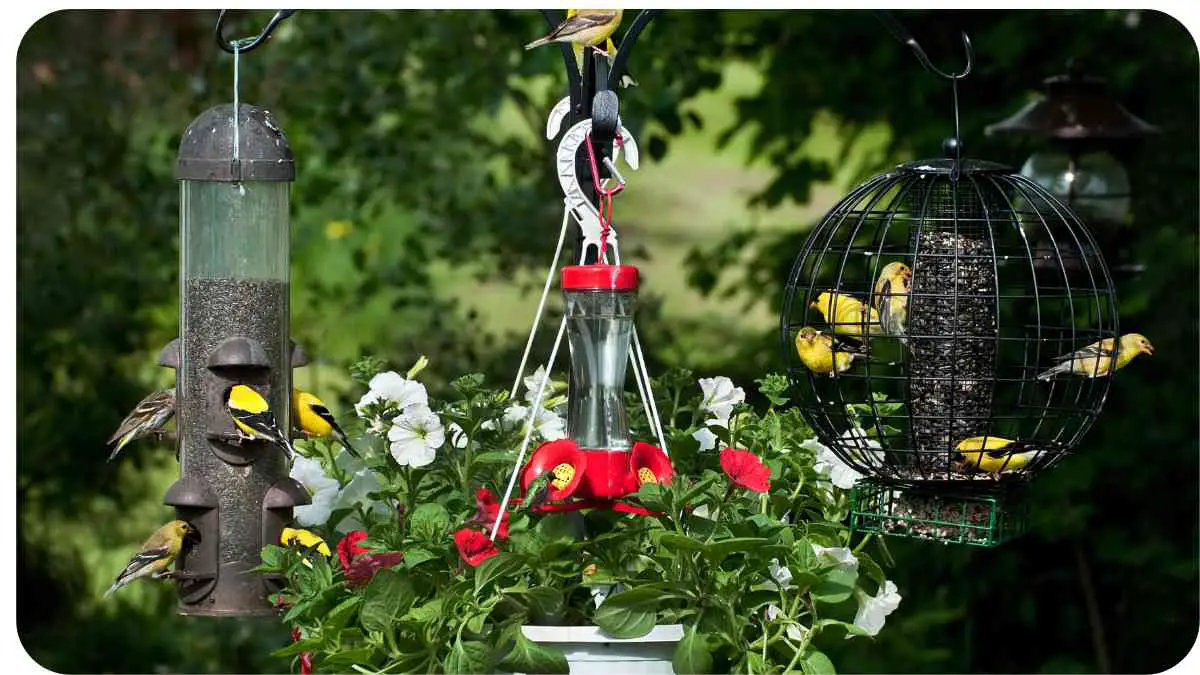Bird feeders can be a delightful addition to any backyard, offering a front-row seat to nature’s colorful avian performances. But with great bird-watching comes the challenge of managing bird feeders effectively. Have you ever set up a bird feeder only to find it overrun by squirrels or damaged by the elements? Or maybe you’re struggling with keeping it clean and operational? You’re not alone!
This article will dive into the common issues that bird feeders face, especially focusing on how baffles can help solve these problems. We’ll explore the types of baffles, how to choose and install them, and provide you with actionable tips to ensure your bird feeder remains a welcoming haven for our feathered friends.
| Key Takeaway |
|---|
| Baffles are essential for keeping unwanted animals away from your bird feeders. |
| Different types of baffles (dome, flared, cylindrical) cater to various needs and pests. |
| Regular cleaning of bird feeders is crucial for bird health and feeder longevity. |
| Proper installation and positioning of baffles and feeders ensure maximum effectiveness. |
| Choosing the right materials for baffles (metal, plastic, glass) can enhance durability and performance. |
Understanding Bird Feeders

Types of Bird Feeders
Bird feeders come in various designs, each catering to different bird species and feeding habits. Here’s a quick overview:
Addressing bird feeder issues often involves checking various components to ensure everything is functioning correctly. For instance, if you’re dealing with a garden pond pump problem, you might find it useful to explore this common issues with garden pond pumps.
| Feeder Type | Description | Best For |
|---|---|---|
| Tube Feeders | Cylindrical feeders with multiple ports. | Small songbirds like finches and chickadees. |
| Hopper Feeders | Feeders with a container that holds seed. | Larger birds such as cardinals and blue jays. |
| Suet Feeders | Hold blocks of suet or fat. | Woodpeckers, nuthatches, and wrens. |
| Platform Feeders | Open trays or platforms. | Various birds, especially ground-feeding species. |
| Nyjer Feeders | Special feeders for tiny nyjer seeds. | Finches and other small seed-eaters. |
How Bird Feeders Work
Bird feeders are designed to attract and hold bird food in a manner that makes it accessible to birds but not to other unwanted animals. They typically have a mechanism to dispense food slowly, ensuring that it lasts longer and attracts more birds. The feeder’s design can affect how easily birds can access the food and how well it withstands weather conditions.
What Are Bird Feeder Baffles?
Purpose of Baffles
Baffles are protective devices installed around bird feeders to deter predators and other unwanted visitors like squirrels. They help keep the feeder safe and functioning by preventing access to food by animals that might otherwise damage the feeder or steal its contents.
Flickering outdoor lights can be both annoying and problematic. To resolve such issues, you may need to consider common landscape lighting problems and their solutions.
Types of Baffles
There are several types of baffles, each designed to tackle specific issues:
| Baffle Type | Description | Best For |
|---|---|---|
| Dome Baffles | Large, dome-shaped structures that cover feeders. | Squirrels and larger animals. |
| Flared Baffles | Cone-shaped baffles that extend outward. | Squirrels, raccoons, and other climbing animals. |
| Cylindrical Baffles | Tubular baffles that encircle the feeder’s pole. | Various pests, including squirrels and raccoons. |
Common Bird Feeder Issues

Squirrels and Other Wildlife
Squirrels are notorious for raiding bird feeders. They are agile and persistent, often managing to reach feeders despite various deterrents. Baffles can be particularly effective against these critters, especially if they are properly sized and positioned.
Feeder Damage
Weather conditions can take a toll on bird feeders. Rain, snow, and wind can cause wear and tear, leading to feeder damage or malfunction. Regular maintenance and choosing durable materials for your feeder and baffles can help mitigate these issues.
Uneven lawn growth can often be a sign of underlying issues. Understanding the potential causes can help, and you might want to look into troubleshooting uneven lawn growth for more insights.
Cleaning and Maintenance
A clean feeder is crucial for bird health. Moldy or old bird seed can be harmful to birds. Regular cleaning and inspection are essential to ensure that your feeder remains in good working condition and continues to attract birds.
Choosing the Right Baffle
Material Options
Baffles come in various materials, each offering different benefits:
| Material | Pros | Cons |
|---|---|---|
| Plastic | Lightweight, affordable. | Can become brittle over time. |
| Metal | Durable, often rust-resistant. | Heavier, can be more expensive. |
| Glass | Aesthetic appeal, easy to clean. | Can break easily. |
Size and Shape
Selecting the right size and shape of a baffle depends on the type of feeder and the specific animals you want to deter. Larger and more conical shapes generally offer better protection against climbing animals.
Installation Tips
Positioning
Position your baffle so that it is high enough to prevent animals from reaching it but still accessible for you to refill. Ensure that there are no nearby branches or structures that animals can use to bypass the baffle.
Mounting Techniques
Secure the baffle firmly to the feeder pole or structure. Ensure it is stable and won’t wobble or move, as this can reduce its effectiveness.
Maintaining Your Bird Feeder
Regular Cleaning
Clean your bird feeder at least once a month to prevent mold growth and disease. Use hot, soapy water and rinse thoroughly. Allow the feeder to dry completely before refilling it.
Troubleshooting Common Problems
If your feeder isn’t attracting birds or seems to be malfunctioning, check for blockages, cleanliness, and ensure that the feeder is positioned correctly. Adjusting the feeder or baffle may solve the issue.
If your automatic sprinkler system isn’t activating as it should, checking for common culprits can be essential. For more details, consider reviewing common issues with automatic sprinklers.
Best Practices for Bird Feeding
Bird Food Choices
Provide a variety of seeds to attract different bird species. Nyjer seeds, sunflower seeds, and suet are popular choices. Avoid filling feeders with old or stale seeds.
Feeding Stations
Consider setting up multiple feeding stations to accommodate different bird species and reduce competition. This can also help attract a wider variety of birds to your yard.
Case Studies
Successful Baffle Installations
One successful example is the use of a large dome baffle at a local park, which effectively kept squirrels away from the bird feeders. This installation led to a significant increase in bird activity and feeder use.
Innovative Feeder Designs
An innovative feeder design included a built-in baffle system that adjusts automatically based on the weight of the animal. This smart feeder design helped prevent both squirrels and large birds from accessing the food.
Wilting plants despite regular watering could indicate a problem beyond just hydration. To get a better understanding of this issue, read up on the mystery of wilting plants.
Conclusion
Bird feeders can be a fantastic way to enjoy and support local wildlife, but they come with their challenges. By understanding common issues and implementing solutions like baffles, you can create a safe and welcoming environment for birds in your backyard. Regular maintenance and thoughtful installation will ensure that your bird feeder remains a beloved spot for feathered friends to visit.
Further Reading
Solving Squirrel Bird Feeder Problems
This article offers practical solutions for keeping squirrels away from your bird feeders, helping you maintain a peaceful bird-watching experience.
Bird Feeder Blues
Explore common issues and frustrations bird feeder owners face, along with tips to address and overcome these challenges.
Bird Feeder Baffles in the Wind
Learn how to ensure your bird feeder baffles stay effective even in windy conditions, improving their durability and performance.
FAQs
How often should I clean my bird feeder?
Clean your bird feeder at least once a month to prevent mold and ensure a healthy feeding environment for birds.
What type of baffle is best for keeping squirrels away?
A large, dome-shaped baffle is generally the most effective for deterring squirrels from accessing your bird feeder.
Can I use any material for baffles?
While you can use various materials, metal and durable plastic are often preferred for their longevity and effectiveness.
How do I properly position a bird feeder?
Position your feeder high and ensure there are no nearby branches or structures that animals could use to reach it.
What should I do if my feeder is not attracting birds?
Check for cleanliness, ensure the feeder is in a suitable location, and try offering a variety of bird foods to attract different species.

Hi! My name is Hellen James, and I’m a landscape designer in Los Angeles. I’ve been working with homeowners and businesses to help them improve the look of their properties for over 10 years.

